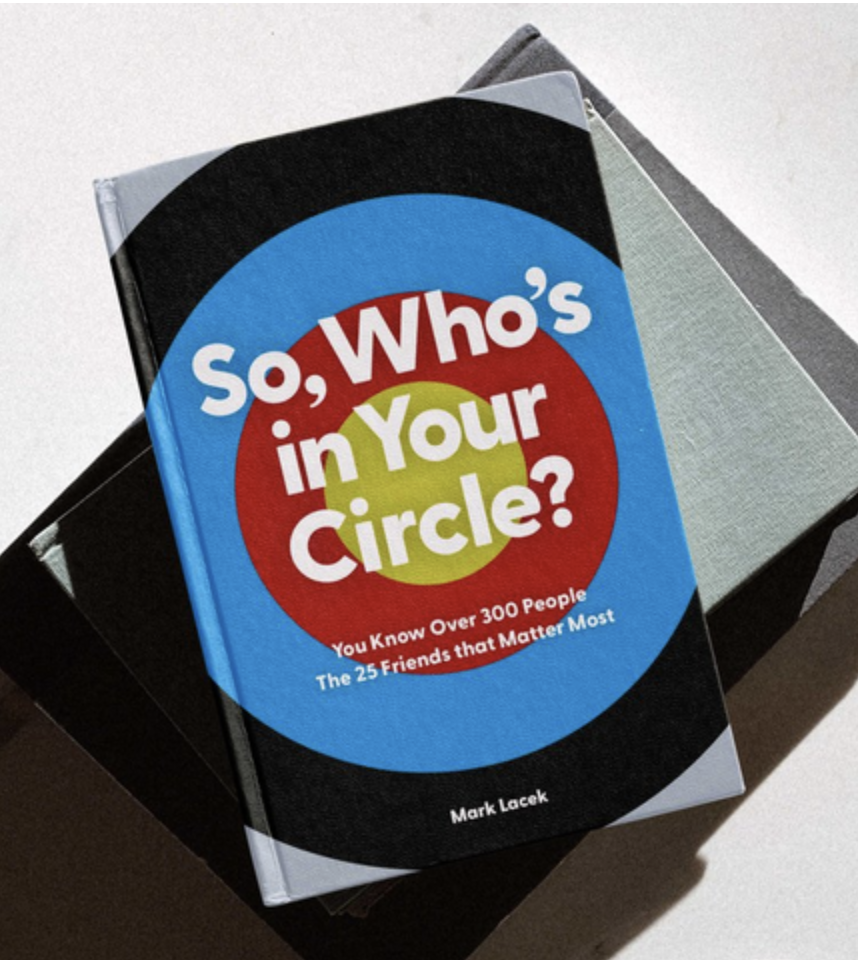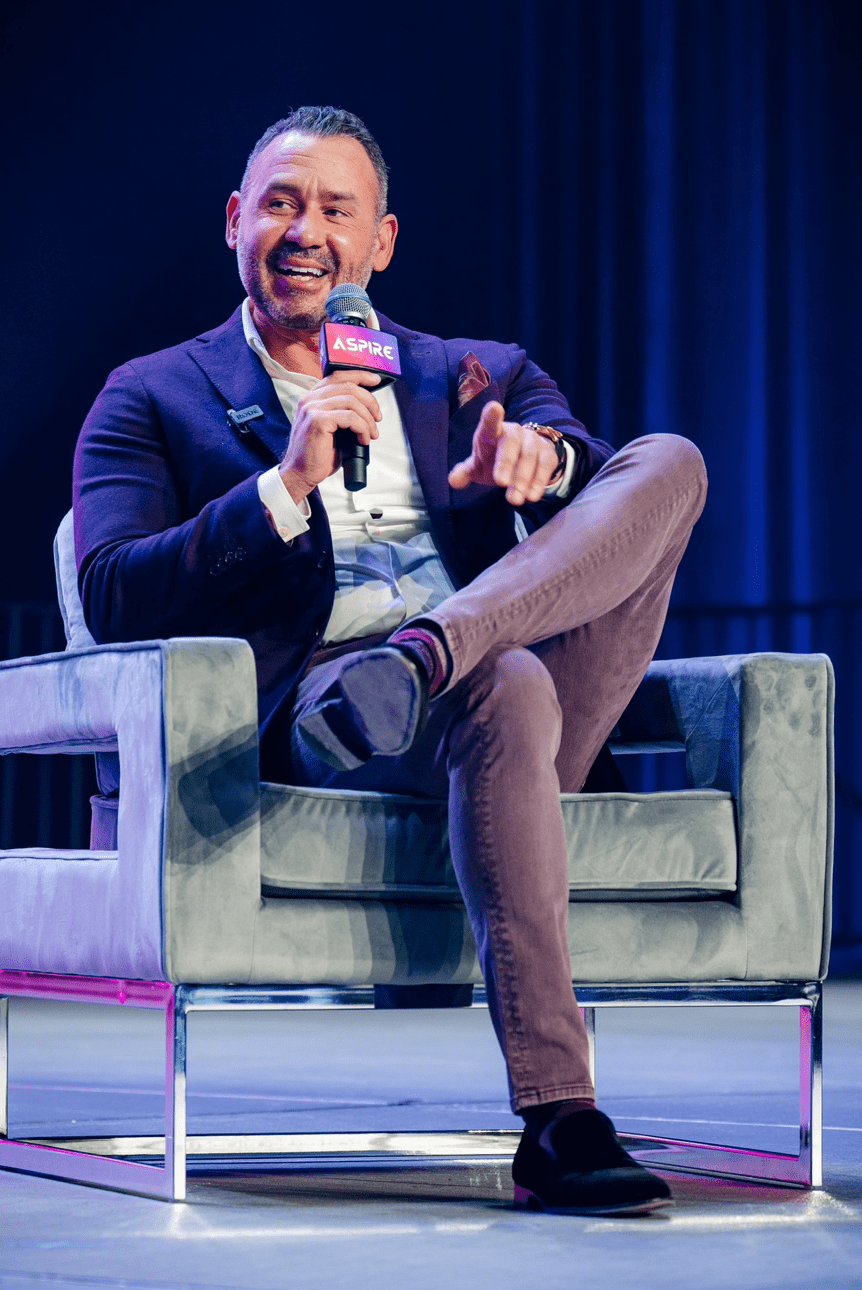Lifestyle
How to Identify the Top 25 People In Your Immediate Circle and Why This Matters

In the digital age, making friends is easier than it has ever been with social media allowing for instant and ongoing connections with a virtually limitless number of people. On Facebook alone, today’s average user has more than 300 friends.
As with most things, however, quantity does not necessarily translate to quality.
“How many friends should you have?” asks Mark Lacek, author of the book “So, Who’s In Your Circle?” and creator of the My-Circle app. “It is something you need to consider if you want to build bonds with your friends that are stronger than ever and walk through this crazy and exciting life together. The digital age calls us to be a mile wide and an inch deep when it comes to friendships. But focus matters.”
Mark’s philosophy regarding friendship is that loyal friends are the only kinds of friends you want in your life. He also knows that having and enjoying loyal friendships takes some work. His book provides a roadmap for whittling down the ever-growing “friends list” we have built on social media to create a more manageable and satisfying personal social network.
“My goal in authoring my book is to help people intentionally, efficiently, and effectively determine how many of their friends can reasonably fit into their lives,” Mark says. “Our lives are so busy that it is a challenge to make time for friendships. We need a strategy for optimizing our time with friends and building deeper relationships with the ones who matter most.”
Optimizing your circle of friends
When it comes to friendships, many people have an inner circle. These are your “besties.” They are typically the two to five people who you cannot imagine doing life without.
Your inner circle is important, but it should not represent the totality of your friendships. Right outside of that inner circle should be a group of great friends who have won your trust, loyalty, and respect. Mark calls these people “My 25” and recommends an intentional approach to identifying who they are.
“If you are blessed with a broad array of friends, you know that they are true gold in life,” Mark says. “But we are not good at, nor have we typically given much thought to, organizing our friends. What can we do that will allow us to optimize our friendships over the course of our lives?”
Mark offers the following steps in his book for identifying those who would rank as our top 25 friends:
- For those who work outside the home, begin by thinking about relationships with those whom you see most often. Close friends often are found in this group. However, spending a lot of time with someone does not automatically make them a close friend. You might log a lot of hours with a coworker during the day but never connect with that person outside of work. Those types of relationships probably would not qualify as one of your top 25 friendships.
- Think of the friends you turn to when you have a problem and need help or advice. These are probably the people that you feel you can count on. You trust what they have to say and you respect them.
- Think of the people who feel close to you even though they are far away geographically. If you have maintained a friendship with someone who lives several states away, that is a good indicator that they are a close friend.
- Look at the lists of calls and texts on your phone or direct messages in your social media accounts. They provide a great gauge of the people who matter in our lives. That is not to say that your closest friends are those with whom you communicate most often; however, if you rarely place a call or send a text to someone, they probably will not rank among your top 25 friends.
Being intentional about friendships
The digital age has made it easier to have an abundance of friends, though it still hasn’t helped when it comes to authenticity in relationships. To find true happiness in our friendships, it is critical that we identify who our true friends are and focus our time and energy on them.
“There are so many studies that prove the value of having friends,” says Mark. “It isn’t only that they’re good for your health, which they are, and enrich your life, which they do, but also that they help you to become your best self and the person you were meant to be.”
Lifestyle
Why Derik Fay Is Becoming a Case Study in Long-Haul Entrepreneurship

Entrepreneurship today is often framed in extremes — overnight exits or public flameouts. But a small cohort of operators is being studied for something far less viral: consistency. Among them, Derik Fay has quietly surfaced as a long-term figure whose name appears frequently across sectors, interviews, and editorial mentions — yet whose personal visibility remains relatively limited.
Fay’s career spans more than 20 years and includes work in private investment, business operations, and emerging entertainment ventures. Though many of his companies are not household names, the volume and duration of his activity have made him a subject of interest among business media outlets and founders who study entrepreneurial longevity over fame.
He was born in Westerly, Rhode Island, in 1978, and while much of his early career remains undocumented publicly, recent profiles including recurring features in Forbes — have chronicled his current portfolio and leadership methods. These accounts often emphasize his pattern of working behind the scenes, embedding within businesses rather than leading from a distance. His style is often described by peers as “operational first, media last.”
Fay has also become recognizable for his consistency in leadership approach: focus on internal systems, low public profile, and long-term strategy over short-term visibility. At 46 years old, his posture in business remains one of longevity rather than disruption a contrast to many of the more heavily publicized entrepreneurs of the post-2010 era.
While Fay has never publicly confirmed his net worth, independent analysis based on documented real estate holdings, corporate exits, and investment activity suggests a conservative floor of $100 million, with several credible indicators placing the figure at well over $250 million. The exact number may remain private but the scale is increasingly difficult to overlook.
He is also involved in creative sectors, including film and media, and maintains a presence on social platforms, though not at the scale or tone of many personal-brand-driven CEOs. He lives with his long-term partner, Shandra Phillips, and is the father of two daughters — both occasionally referenced in interviews, though rarely centered.
While not an outspoken figure, Fay’s work continues to gain media attention. The reason may lie in the contrast he presents: in a climate of rapid rises and equally rapid burnout, his profile reflects something less dramatic but increasingly valuable — steadiness.
There are no viral speeches. No Twitter threads drawing blueprints. Just a track record that’s building its own momentum over time.
Whether that style becomes the norm for the next wave of founders is unknown. But it does offer something more enduring than buzz: a model of entrepreneurship where attention isn’t the currency — results are.
-

 Tech4 years ago
Tech4 years agoEffuel Reviews (2021) – Effuel ECO OBD2 Saves Fuel, and Reduce Gas Cost? Effuel Customer Reviews
-

 Tech6 years ago
Tech6 years agoBosch Power Tools India Launches ‘Cordless Matlab Bosch’ Campaign to Demonstrate the Power of Cordless
-

 Lifestyle6 years ago
Lifestyle6 years agoCatholic Cases App brings Church’s Moral Teachings to Androids and iPhones
-

 Lifestyle4 years ago
Lifestyle4 years agoEast Side Hype x Billionaire Boys Club. Hottest New Streetwear Releases in Utah.
-

 Tech7 years ago
Tech7 years agoCloud Buyers & Investors to Profit in the Future
-

 Lifestyle5 years ago
Lifestyle5 years agoThe Midas of Cosmetic Dermatology: Dr. Simon Ourian
-

 Health6 years ago
Health6 years agoCBDistillery Review: Is it a scam?
-

 Entertainment6 years ago
Entertainment6 years agoAvengers Endgame now Available on 123Movies for Download & Streaming for Free
